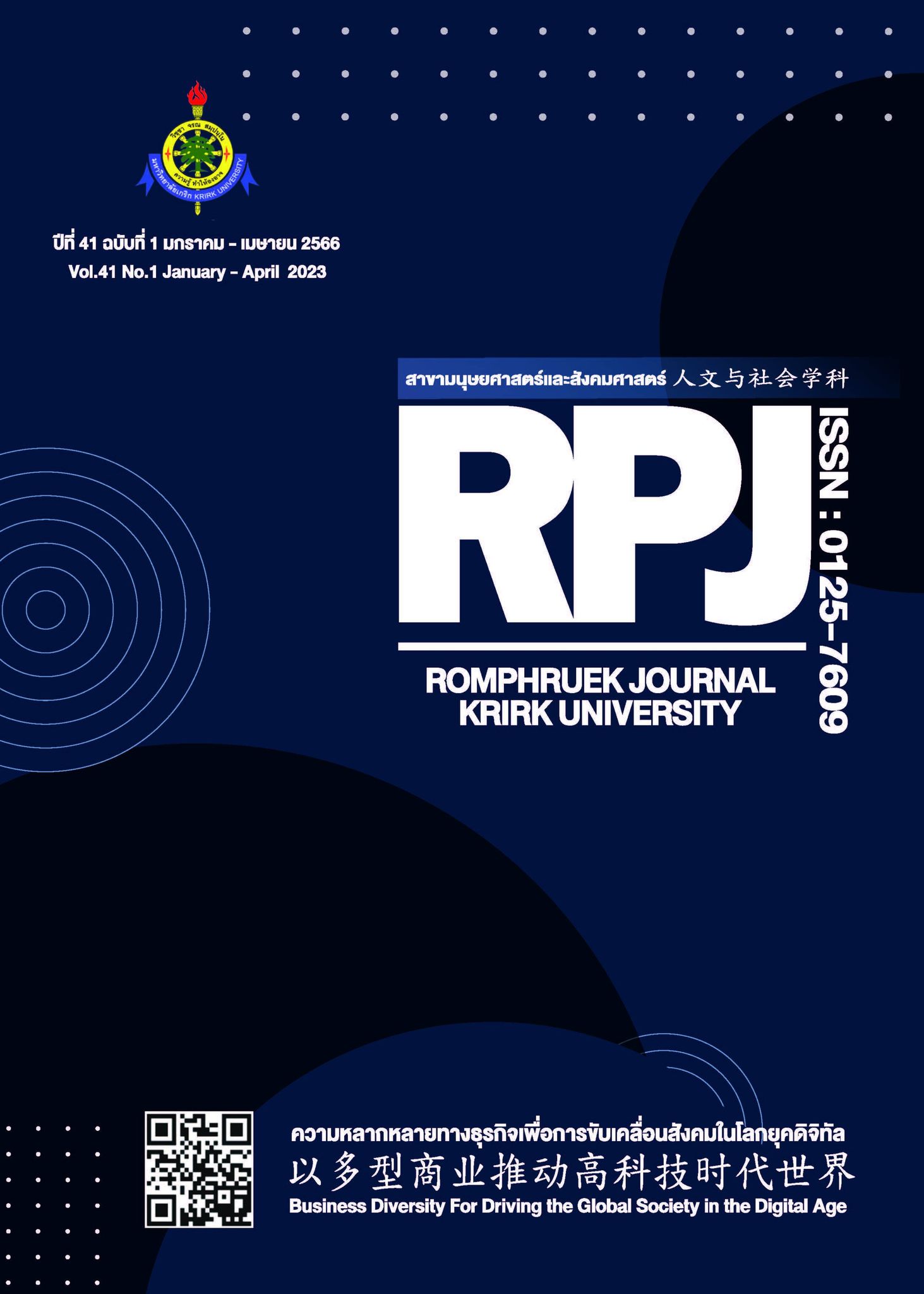The Investigation of Adverse Effect from Using Cosmetics and Factors Affecting Buying Decisions and Willingness to Pay for Higher Price of Cosmetics in Thailand
Main Article Content
Abstract
At present, the competition in the cosmetics industry in Thailand is steadily intensifying as there is an ever-increasing demand for cosmetic products. The cosmetic companies and industries need to ensure safety and either eliminate or mitigate the after-effects of their products. The adverse reactions associated with the use of cosmetics have been critically considered as one of the crucial constituents of the cosmetics industry. The objectives of the study are to investigate the adverse effect from using cosmetics and factors affecting buying decisions and willingness to pay for higher price of cosmetics in Thailand. The cross-sectional study was conducted among women who suffered from the cosmetics-related after-effects. Based on the sample of 400 women who experienced adverse reactions from using cosmetics and skincare products, the results indicated that there were two factors playing crucial roles in the consumers’ decision to purchase cosmetics, these were: well-known brands and laboratory-tested products. These findings indicated that the respondents who had encountered the after-effects from using cosmetics concerned themselves about facing the adverse effects again in the future and the cosmetics that were laboratory-tested could improve the confidence of consumers: hence, they increased cosmetics consumption in turn. Moreover, the study revealed that respondents aged between 18-25 years old placed less importance on laboratory testing and had higher willingness to pay higher price for trusted brands than other age groups. In addition, the respondents with higher income tended to pay more attention to laboratory testing and were more willing to pay higher price for cosmetics and skincare products certified by the laboratory compared to the respondents with lower income. The results of this study can help the entrepreneurs in the cosmetic industry to 1) understand various factors affecting the buying decision and the willingness to pay higher price for cosmetic of consumers and 2) determine the target group to market the cosmetic products certified by laboratory tests.
Article Details

This work is licensed under a Creative Commons Attribution-NonCommercial-NoDerivatives 4.0 International License.
Every article published in the Romphruek Journal of the Humanities and Social Sciences is the opinion and point of view of the authors. Thery're not the viewpoint of Krirk University or the editored department. Any part or all of the articles for pablication must be clearly cited.
References
Abdelazim Mohammed, N. B., Garcia Medina, I., & Gonzalez Romo, Z. (2018). The effect of cosmetics packaging design on consumers' purchase decisions. Indian Journal of Marketing, 48(12), 50-61.
Ajitha, S., & Sivakumar, V. (2017). Understanding the effect of personal and social value on attitude and usage behavior of luxury cosmetic brands. Journal of Retailing and Consumer Services, 39(C), 103-113.
Bilal, A., Mekonen, Z., Osman, E., Mulugeta, A., Shekabdulahi, M., & Berhe, D. (2016). Cosmetics Use-Related Adverse Events and Determinants Among Jigjiga Town Residents, Eastern Ethiopia. Dermatology and Therapy, 7(1), 143-153.
Chekima, B., Chekima, F., & Adis, A., (2020). Social Media Influencer in Advertising: The Role of Attractiveness, Expertise and Trustworthiness. Journal of Economics and Business, 3(4), 1507-1515.
Cochran, W.G. (1963). Sampling Technique (2nd ed.). New York : John Wiley and Sons Inc.
Cortez-Pereira, C., Baby, A., & Velasco, M. (2010). Fragrance technology for the dermatologist - A review and practical application. Journal of Cosmetic Dermatology, 9(3), 230-241.
Di Giovanni, C., Arcoraci, V., Gambardella, L., & Sautebin, L. (2006). Cosmetovigilance survey: Are cosmetics considered safe by consumers? Pharmacological Research. The Official Journal of the Italian Pharmacological Society, 53(1), 16-21.
Indra, M., Balaji, K., & Velaudham, C. (2020). Impact of social influence and safety on purchase decision of green cosmetic. International Journal of Future Generation Communication and Networking, 13(3), 3036-3042.
Krishnan, S., Amira, N., Atilla, U., Syafawani, S., & Hafiz, M. (2017). The usage of cosmetic in malaysia: understanding the major factors that affect the users. Management, 7(1), 48-51.
Li, T., & Visitnikita, C. (2017). Factors influencing women to purchase cosmetics in Bangkok, Graduate Studies Journal, 14(67), 121-127.
Manavat, P., Pandey, S., Pandey, M., & Chauhan, D. (2020). Understanding the impact of influencer on brand loyalty in cosmetic industry. International Research Journal of Modernization in Engineering Technology and Science, 4(3), 1372-1382.
Mansor, N., Ali, D., & Yaacob, M. (2010). Cosmetic usage in Malaysia: Understanding of the major determinants affecting the users. International Journal of Business and Social Science, 1(3), 273-281.
Orton, D., & Wilkinson, J. (2004). Cosmetic allergy: incidence, diagnosis, and management. American Journal of Clinical Dermatology, 5(5), 327-337.
Paomanacharoen, C. (2019). Consumers' online shopping habits in Bangkok. The journal of social communication innovation, 7(2), 17-31.
Pringpattanapong, W. (2008). Factors influencing the adverse effects associated with the use of cosmetics among teenagers in Nakhon Pathom. Medical Journal, 27(4), 1223-1234.
Sautebin, L. (2007). A cosmetovigilance survey in Europe. Pharmacological Research. The Official Journal of the Italian Pharmacological Society, 55(5), 455-460.
Selvarajah, K., Amira, N., Atilla, U., Syafawani, S., & Hafiz, M. (2017). The Usage of Cosmetic in Malaysia: Understanding the Major Factors that Affect the Users. Management, 7(1), 48-51.
Sung, I. (2021). Interdisciplinary Literature Analysis between Cosmetic Container Design and Customer Purchasing Intention. The Journal of Industrial Distribution & Business, 12(3), 21–29.


